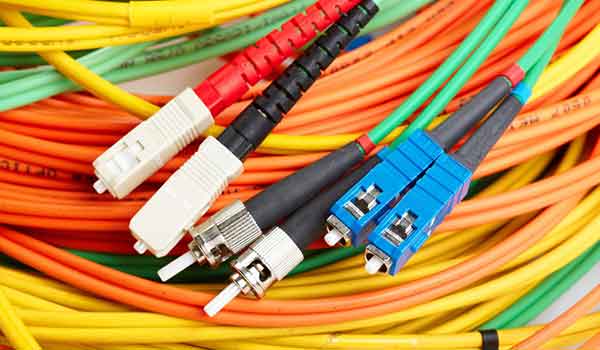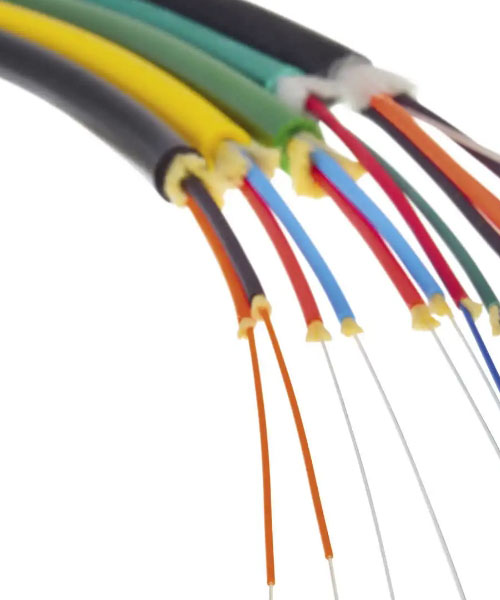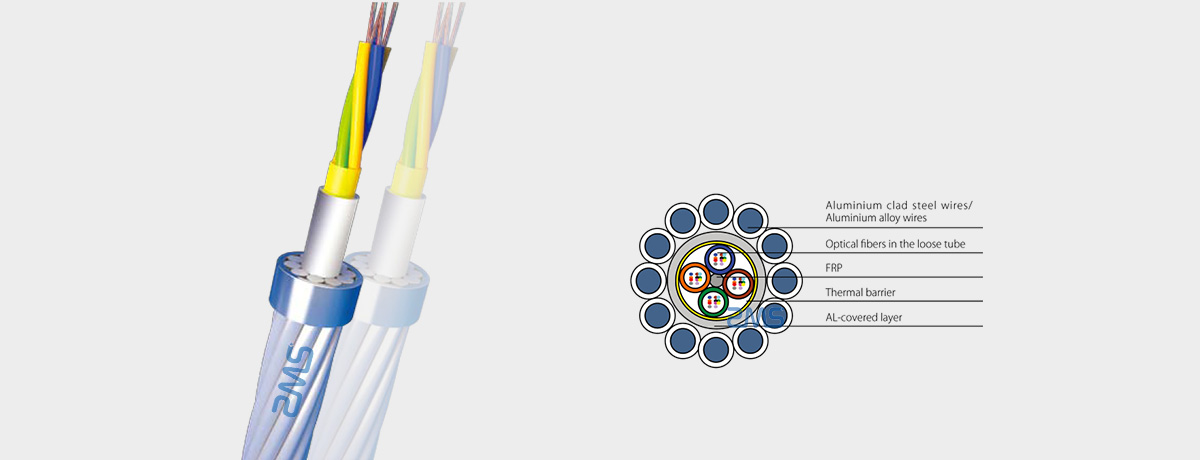Fiber optic cables are critical components in modern communication networks, enabling high-speed data transmission over long distances. As businesses and individuals increasingly rely on fast, reliable internet connections, fiber optic technology has emerged as the gold standard for data transfer. Two main types of fiber optic cables dominate the market: single-mode and multimode fiber optic cables.
Understanding the differences between these two types of fiber optics is essential for making informed decisions about network infrastructure, as each has its strengths and weaknesses depending on the specific application. This article VERI Cable delves into the key distinctions between single-mode and multimode fiber optic cables, exploring factors such as design, performance, ongkos, and usage scenarios.

1. What is Fiber Optic Technology?
Before comparing single-mode and multimode fibers, it’s essential to understand the basics of fiber optic technology.
Fiber optic cables transmit data using light signals rather than electrical currents. They consist of thin strands of glass or plastic (the core), surrounded by a cladding that reflects light into the core. This process, called total internal reflection, allows light signals to travel long distances with minimal loss of strength. Fiber optic cables are known for their ability to provide higher bandwidths, reduced interference, and more extended transmission ranges than traditional copper cables.
2. Single-Mode Fiber Optic Cable
2.1 Design and Structure
Single-mode fiber (SMF) is named for its ability to carry light signals along one pathway, or mode, at a time. This is achieved by using a core with an extremely small diameter—typically around 8 to 10 microns. The cladding that surrounds the core is generally 125 microns, which is standard for most fiber optic cables.
The small core size limits the number of light reflections, reducing attenuation (signal loss) and allowing signals to travel further without degradation. In single-mode fibers, light is transmitted through the core in a straight line, resulting in fewer signal distortions and higher data transmission quality over longer distances.
2.2 Performance
Single-mode fibers are designed for long-distance communication. Because they minimize signal loss and distortion, they can transmit data over distances of up to 100 kilometers or more without the need for signal boosters (amplifiers). These fibers typically operate in the 1310 nm and 1550 nm wavelength ranges.
Key advantages include:
- High Bandwidth: Single-mode fiber can support virtually unlimited bandwidth, making it ideal for high-demand applications like internet backbone infrastructure and telecommunications.
- Minimal Signal Loss: Due to fewer reflections within the core, signal loss is significantly reduced.
- Long Distance: Single-mode fibers are the best choice for long-haul networks, connecting cities and regions.
Sanajan kitu, single-mode fiber optics typically require more sophisticated light sources, such as lasers, and their installation can be more costly compared to multimode fibers.
2.3 Applications
Single-mode fiber is the preferred choice for:
- Telecommunications: Long-distance phone lines and internet services rely on single-mode fibers due to their ability to transmit data over long distances without frequent signal boosting.
- Cable Television (CATV): Used in high-capacity networks for delivering television and internet services to large areas.
- Data Centers: Increasingly used in large data centers where high bandwidth and long transmission distances are necessary.

3. Multimode Fiber Optic Cable
3.1 Design and Structure
Multimode fiber (MMF) gets its name because it can carry light signals along multiple paths, or modes, simultaneously. The core of a multimode fiber is significantly larger than that of a single-mode fiber, typically around 50 to 62.5 microns in diameter. The larger core allows multiple light signals (or modes) to propagate at once.
This design, while allowing more data to travel through the cable at the same time, introduces more signal reflections and modal dispersion (spreading of light pulses), leading to higher signal loss over longer distances. Sanajan kitu, for short distances, multimode fiber performs efficiently and is cost-effective.
3.2 Performance
Multimode fibers are optimized for short-distance communication, typically less than 2 kilometers, and are often used in environments like local area networks (LANs) and data centers where high-speed data transmission is needed over shorter distances.
Key characteristics include:
- Moderate Bandwidth: While multimode fibers offer less bandwidth than single-mode fibers, they still support high-speed transmission for short distances.
- Higher Signal Loss: Due to multiple modes of light traveling through the core, there is greater dispersion and signal loss, limiting the distance over which multimode fiber can transmit data without amplification.
- Wavelengths: Multimode fibers typically operate at 850 nm and 1300 nm wavelengths.
One of the benefits of multimode fiber is that it can use cheaper light sources, such as LEDs, making the initial cost lower than that of single-mode fiber. Sanajan kitu, the signal quality degrades more quickly with distance, making it less suitable for long-haul transmission.
3.3 Applications
Multimode fiber is commonly used in:
- Enterprise Networks: Ideal for use in office buildings and campuses where connections between buildings or floors do not require long distances.
- Data Centers: Often used for short-distance data transmission within data centers, connecting servers, storage, and networking equipment.
- LANs: Used to connect computers and devices within a localized area, such as a business or academic institution.
4. Comparison Between Single-Mode and Multimode Fiber Optic Cables
| Feature | Single-Mode Fiber | Multimode Fiber |
|---|---|---|
| Core Size | 8-10 microns | 50-62.5 microns |
| Wavelength | 1310 nm, 1550 nm | 850 nm, 1300 nm |
| Distance | Up to 100 km or more | Up to 2 km |
| Bandwidth | Virtually unlimited | High, but limited compared to single-mode |
| Ongkos | Higher due to expensive light sources and equipment | Lower installation cost |
| Applications | Long-distance telecommunications, CATV, data centers | LANs, data centers, campus networks |
| Light Source | Laser | LED or VCSEL |
| Attenuation | Low (less signal loss) | Higher (more signal loss) |

4.1 Bandwidth
One of the primary differences between single-mode and multimode fibers is the bandwidth they can support. Single-mode fibers offer virtually unlimited bandwidth because they transmit light through a single mode. In contrast, multimode fibers support high bandwidth for short distances but suffer from modal dispersion, which limits the bandwidth over longer distances.
4.2 Distance
Single-mode fibers are designed for long-haul communication, with the ability to transmit data over 100 km or more without significant signal degradation. Multimode fibers, on the other hand, are limited to around 2 kilometers due to their larger core and modal dispersion.
4.3 Ongkos
Cost is a significant factor when choosing between single-mode and multimode fibers. Single-mode fibers require more expensive light sources (lasers) and transceivers, making the overall installation and equipment costs higher. Multimode fibers, by contrast, are cheaper to install because they use less expensive light sources such as LEDs or vertical-cavity surface-emitting lasers (VCSELs). Sanajan kitu, the lower initial cost comes with trade-offs in performance, particularly over longer distances.
4.4 Attenuation and Dispersion
Attenuation refers to signal loss over distance. In single-mode fibers, attenuation is minimal due to the single light path, which allows the signal to travel longer distances without degradation. In contrast, multimode fibers suffer from higher attenuation because multiple light paths (modes) interfere with each other.
Dispersion, specifically modal dispersion, is another key factor. Single-mode fibers experience very little dispersion since there is only one path for the light signal to travel. In multimode fibers, modal dispersion can cause light pulses to spread out as they travel through the cable, leading to signal distortion over longer distances.

5. Which Should You Choose: Single-Mode or Multimode Fiber Optic Cable?
The choice between single-mode and multimode fiber optic cables depends on several factors, including the intended application, required transmission distance, and budget.
- For long-distance applications: If your network needs to transmit data over long distances, such as between cities or in large telecommunication networks, single-mode fiber is a clear choice. It offers higher performance over long distances but with a higher upfront cost.
- For short-distance, high-speed applications: If your network requires high-speed data transmission but operates within a limited geographical area, such as a campus or data center, multimode fiber offers a cost-effective solution. The cheaper installation costs make it an attractive option for LANs, even though its distance capabilities are limited compared to single-mode fibers.
- Consider future scalability: If future bandwidth requirements are likely to increase, and your network may expand over longer distances, investing in single-mode fiber can offer long-term benefits, even though the initial investment is higher.
Both single-mode and multimode fiber optic cables have their advantages and disadvantages, and the decision on which to use depends on the specific needs of your network.